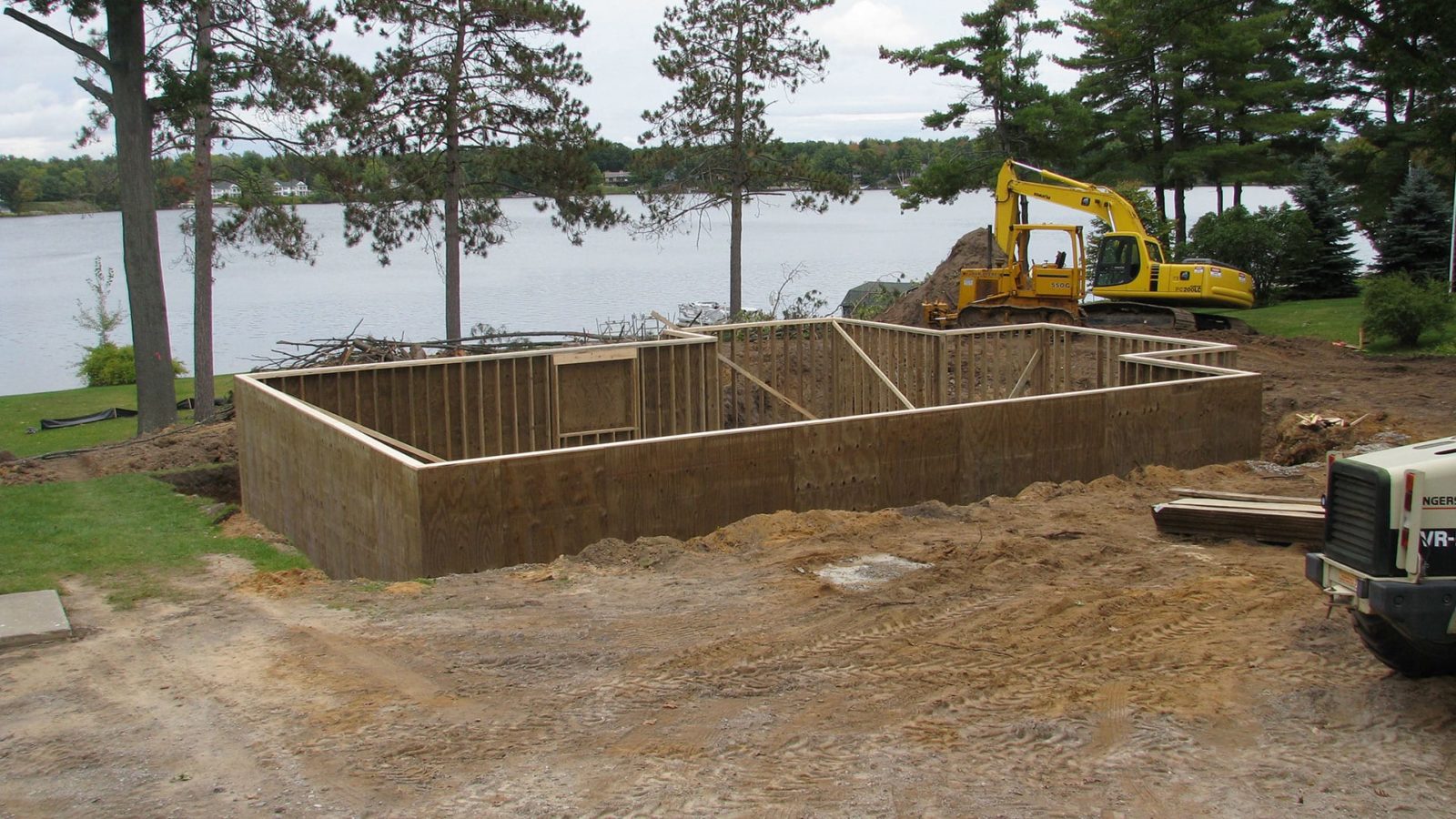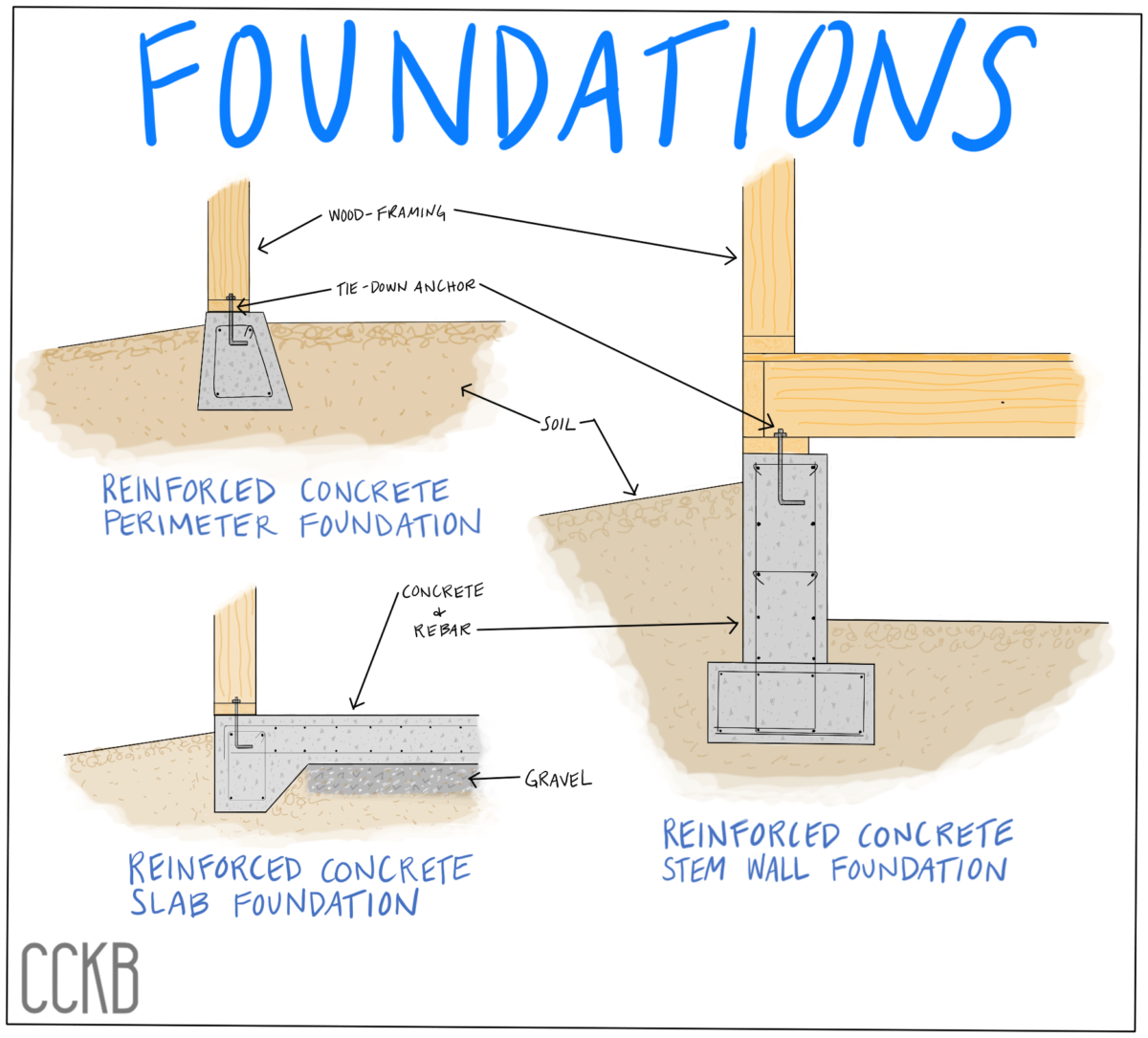Table Of Content

Types of footings include shallow footings, pad footings, strip footings, raft footings, and pile footings. Once the foundation walls are in place, you can pour a slab foundation if your project calls for one. Crawlspace foundations are foundations that are raised from the ground by at least 18 inches using piers and beams or the stem wall. The most expensive option is the basement foundation that costs around $40,000 to install, depending upon geographic area. While concrete is the material most commonly used to build foundations, it isn’t the only option.
What Are Signs You Need to Waterproof Your Basement?
The cost to encapsulate a crawl space or basement with vapor barriers is only 50 cents–70 cents, but it’s best applied by a professional. The interior basement is easier to access, so removing water costs less, usually $500–$10,000 for a 1,000-square-foot space. However, it’s generally less effective than keeping the water entirely out through exterior waterproofing, which typically costs $3,000–$15,000. This is a more involved process that requires excavation and specialized equipment. Many basement waterproofing projects combine both interior and exterior methods. Our team of professionals will inspect your basement, slab, crawl space, or post and pier foundation, looking for any deterioration or damage.
Basement Waterproofing Labor Cost
However, you should still protect the foundation with drainage materials like gutters, downspouts, and a sub-slab drainage pad that redirects moisture away from the foundation. The answer to this question hinges on many factors, including your local climate, financial considerations, and lot features. Your home’s design and soil composition also contribute to the decision-making process, making every home’s best foundation type unique. Concrete panels have a higher up-front cost than other foundation types but offer unique benefits. The house is built directly onto the foundation, eliminating the need for a flooring support system, which further cuts costs and speeds up construction. The type that’s right for your home depends largely on the properties of your building site, such as the soil type, water table depth, and slope.
Types of Foundations and the Pros and Cons of Each
How To Obtain, Expand, Decorate, And Customize Your House In Palia - TheGamer
How To Obtain, Expand, Decorate, And Customize Your House In Palia.
Posted: Thu, 14 Sep 2023 07:00:00 GMT [source]
Concrete slab foundations (or “Slab on Grade”) are one of the easiest types of foundation to build. During construction, concrete footers are poured approximately two feet below the finish grade. The foam blocks that make up an insulated concrete form foundation are expensive. Moreover they require footings, and since most folks intend to use these types of foundations for basements, they need a slab as well. The costs add up, but this option may still be worth it to some homeowners.
Smaller hairline cracks won’t cause structural issues, but they can be a source of leaks. Pavement ants may also nest in foundations, but they’re unlikely to cause any structural damage. The purpose of a mono slab is very different than that of a daylight basement. Knowing what purpose you want your foundation to serve is vital since it affects how you’ll use your home.
Contractors can upgrade these cripple walls by nailing ½” plywood to the frame, giving it shear resistance (shear paneling). Most homes built before the 1940s didn’t have good drainage or moisture control. In cities that experience small amounts of rainfall, architects purposely leave gutters out of their design. Older basements and crawl spaces weren’t equipped with drain tile systems, sump pumps, or vapor barriers, leaving foundations exposed to moisture buildup. Gutter downspouts in older homes are placed too close to the foundation, leading to water buildup directly outside the concrete (or stone).
Slab-on-Grade
Foundation bolts were only required in 1949 by the Uniform Building Code and were not uniformly enforced by local governments until 1958. If your home was built before or around this time, check with local county records to make sure it has foundation bolts. A buried post footing is best for decks that require moderate to high levels of support. The process involves obtaining permits, gathering building materials, laying out footings, constructing walls, and pouring the foundation. Crawlspace foundations are also known as raised foundations and are one of the best foundation types that a house can be built on.
A. Climate Required
The best type for your project depends on climate, soil type, budget, and structural needs. Having already learned that slabs are the cheapest of all foundations to install, you may not be surprised to discover that slabs are also the most common type. Double the size of the building in question to 2,400 square feet and expect the price range to be between $12,000 to $80,000.

Wood Foundation
Construction involves pouring concrete over a prepared level area and reinforcing it with a metal rebar grid. Poured concrete slabs are popular for their affordability, but there are a few downsides to this foundation type. Thickness ranges from 4 to 8 inches, and it’s best to reinforce concrete slabs with drainage pipes and steel rebar. They’re ideal for areas with minimal frost or no frost line because of their shallow depth and direct contact with the ground. The type of foundation supporting your home has a widespread effect on the building’s durability and on your comfort. Whether you’re planning to build your own home or you want to know more about the house you live in now, getting familiar with foundation design is the perfect place to start.
For example, poured concrete walls are less prone to leaks than block walls because there aren’t any joints to become leaky. Thus, poured concrete foundations are typically less expensive to waterproof. However, concrete is porous and absorbs moisture, so even concrete walls can get wet and effloresce. Most occupied homes in the U.S. were built after 1900, using the same foundations found in modern construction. While the types of foundations used were the same as now, the materials and building methods were different. One of the best ways to find out is to check if there is a crawl space beneath your home.
The footing, stem wall, and concrete subfloor all go down at the same time, and the slab is a few inches thick. Instead of footers, there are thicker areas of concrete where load-bearing walls go. Additionally, the wood is used to elevate the home off the ground, which helps protect the house from water damage and pest infestations. Not so long ago, stone foundations were one of the more popular choices for the base of a home. Homeowners with houses built over a century ago may still have a foundation of natural stone instead of poured concrete or concrete blocks. This type of foundation is the easiest and fastest to construct, consisting of a single concrete slab that typically measures about 4 to 8 feet in thickness.
Finished basements are popular choices because they can significantly increase a home’s living space. Unfinished basements offer convenient locations for furnaces, water heaters and other storage options. Some types of ants, like carpenter ants, are known to burrow into wood. Only about 30 percent of family homes built after 2013 have full or partial basements.
I'm Glenn Prescot, an Interior Designer originally from Kansas USA and now living in Europe. I am a fan of DIY, home design, gardening and anything related to home interiors and exteriors. Stem wall installs are more expensive and complex because this is multi-step process that may require multiple pours. This is an excellent choice for homes in many areas, but may not be suitable in areas that see more than a moderate frost.
Pier and beam foundations are more common in commercial and industrial applications. However, for larger residential homes, many builders will use drilled shaft concrete piers and beams. Many people consider a partial basement to be a crawl space since you can store some items there but can’t convert it into a living space.
They are usually 4-6 inches thick and are more effective on level ground or minimal slope. Features of crawlspace foundations include easier access to electrical wiring and plumbing systems. Their design allows ventilation to control the build-up of moisture below the house.
Modular Home Prices Today: A Cost-Effective Way To Build a New House (2023) - Bob Vila
Modular Home Prices Today: A Cost-Effective Way To Build a New House ( .
Posted: Thu, 21 Dec 2023 08:00:00 GMT [source]
Over time, the types of home foundations have changed to meet the needs of the time, evolving from stone and wood on historic homes to more popular types involving concrete and ICF. Pier foundations are still standard in coastal regions and are specialty foundations used to protect the home in storms or on land with weak soil conditions. This material can absorb so much water that it eventually becomes waterproof.

No comments:
Post a Comment